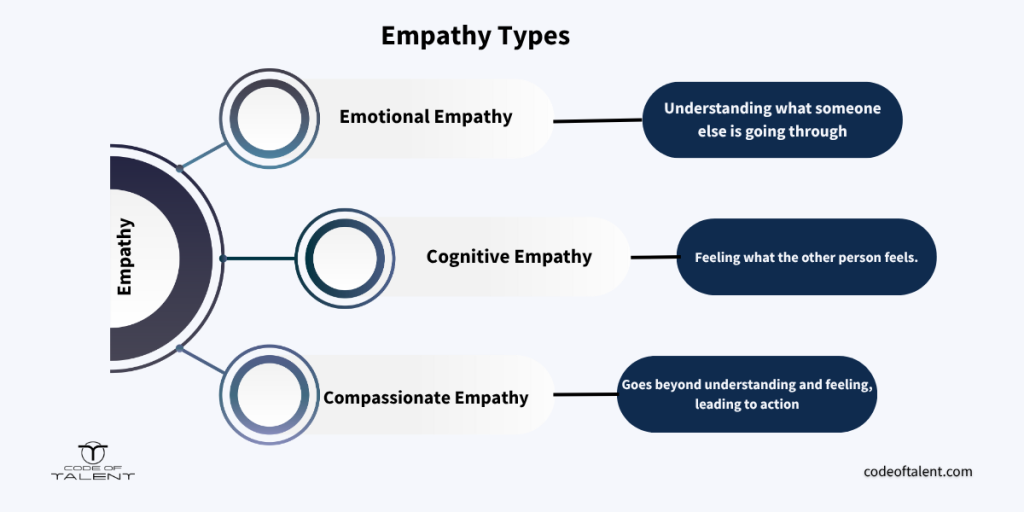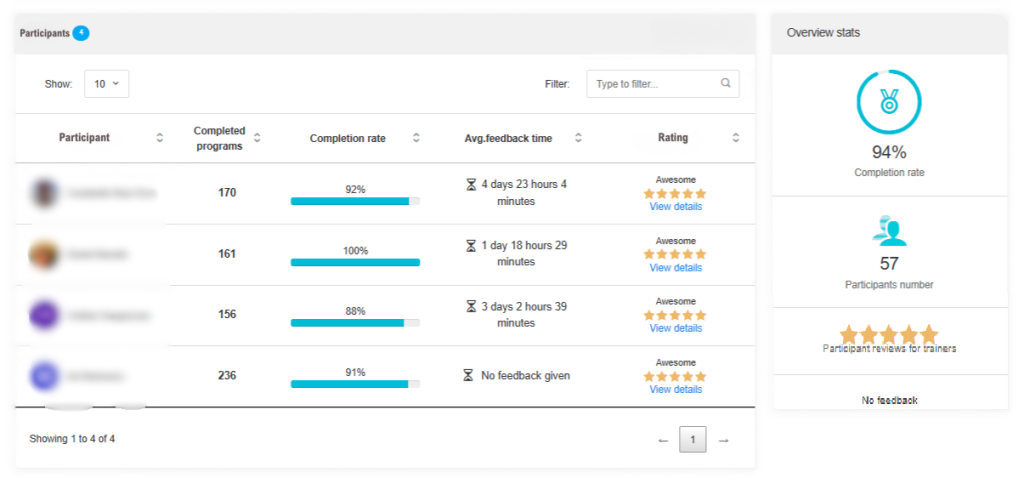In an AI-driven world, people crave something that machines can’t replicate: genuine human connection. According to PwC, 59% of all consumers feel that companies have lost touch with the human element of the customer experience. Still, one of the best ways to bring that human element back is through empathy in customer service: the ability to truly understand what a customer is feeling and respond with care.
What’s even more telling is that, according to Salesforce, 80% of customers now see the experience a company offers as equally important as the product or service itself. That experience often boils down to how customers are treated and whether or not they feel heard and understood.
Empathy in customer service is the key to bridging this gap. But here’s the big question: Can empathy be trained, practiced, and measured?
Yes. And here’s how.
Why Is Empathy in Customer Service Important?
Empathy means being able to understand and share another person’s feelings. In customer service, it’s what turns a transaction into a human interaction.
Empathy in customer service exists in three forms:
- Cognitive empathy: understanding what someone else is going through. This helps agents grasp the situation clearly and respond logically.
- Emotional empathy: feeling what the other person feels. This creates a genuine emotional connection that helps customers feel seen and validated.
- Compassionate empathy: going beyond understanding and feeling, this type of empathy leads to action.

All three are necessary. Here’s why:
1. It improves customer satisfaction
Research from Zendesk shows that 73% of customers would choose a competitor after multiple bad experiences. If the interaction lacks empathy, that bad experience is often what they remember.
2. It builds loyalty
When customers feel understood, they come back. It’s that simple. A good product may bring someone in, but empathy keeps them around.
3. It helps de-escalate tense situations
A calm, empathetic tone can prevent frustration from turning into a crisis. It can defuse anger and open the door for problem-solving.
4. It supports better business outcomes
Empathetic service translates to more satisfied customers, which in turn leads to better customer experience (CX) and business outcomes. Here are some of the few metrics that empathy can improve:
CX Metrics
| Metric | How empathy improves it |
| Customer Satisfaction (CSAT) | When people feel understood, they rate the experience higher. |
| Net Promoter Score (NPS) | Happy customers are more likely to recommend the brand. |
| Customer Effort Score (CES) | Empathetic service makes solving problems feel easier. |
| First Contact Resolution (FCR) | Listening carefully helps solve the issue the first time. |
| Average Handle Time (AHT) | Clear, calm conversations often take less time. |
| Customer sentiment | Positive emotions during a call or chat lead to better feedback. |
| Repeat business | Customers are more likely to return when they feel valued. |
Business Results
| Metric | How empathy improves it |
| Longer customer relationships | People stay loyal when they feel cared for. |
| Lower customer loss | Fewer customers leave after bad experiences when empathy is shown. |
| More revenue per customer | Satisfied customers spend more over time. |
| Better sales during support | Trust makes it easier to recommend helpful products or upgrades. |
| Lower service costs | Solving problems with care avoids repeat calls or escalations. |
| Stronger brand image | A company known for empathy earns respect and loyalty. |
Common Signs Your Team Lacks Empathy (and What It’s Costing You)
It’s not always obvious when a customer service team lacks empathy. But the signs are there and often hiding in plain sight. When empathy in customer service is missing, this is what typically happens:
- Agents rely heavily on scripted responses.
- There’s no personalization: customers feel like ticket numbers, not people.
- Follow-ups don’t happen, even when issues aren’t resolved.
- Reviews mention words like rude, robotic, or uncaring.
- Long-time clients start to disappear.
- CSAT and NPS start to dip.
In the long run, these small cracks add up to big costs:
- Lost trust
- Customers finding better services elsewhere
- Reputation declining due to poor online reviews
- Loss of revenue.
How to Show Empathy in Customer Service
Understanding empathy is one thing, but showing it in a real customer interaction is another. This is why a few simple actions go a long way.

1. Listen actively
There’s a difference between hearing a conversation and truly understanding it. When people feel heard, they feel valued and are more likely to interact with a person in the future. In fact, research shows that active listening lights up the brain’s reward centers and creates a sense of emotional safety.
2. Validate emotions
When someone shares a difficult experience, acknowledging their feelings without judgment or trying to fix the problem immediately shows that their emotional response is understandable.
Validation can be expressed through phrases like:
- “That sounds really frustrating.”
- “I can understand why that would be upsetting.”
- “It makes sense you’d feel that way.”
- “Anyone in your position might feel the same.”
3. Respond respectfully
Tone, word choice, and even typing style all contribute to how a message is received. Especially in writing, where facial expressions and vocal tone are absent, words carry extra weight and can significantly influence how empathy in customer service is perceived.
Avoid: sarcasm, passive-aggressive remarks, or signs of impatience (like blunt one-word answers or rushed responses). These can easily be misinterpreted and may shut down open communication. Instead, choose language that is clear, courteous, and calm.
Use: respectful responses, subtle things like “please” and “thanks,” and full sentences.
- Instead of “Obviously, that’s not going to work,” try “I see where you’re coming from. Here’s another approach we could consider.”
- Instead of “You’re missing the point,” try “Let me clarify what I meant earlier.”
4. Use personalization
Customer service often feels cold and scripted, making customers feel like just another number. However, small touches of personalization can transform the customer experience entirely. When employees use a customer’s name or recall previous interactions, it shows genuine care and attention.
Besides the benefits personalization brings to the customer-brand relationship, the business impact of personalization is significant. According to McKinsey, companies that excel in personalization see 40% more revenue, proving that real human connection drives business success.
5. Follow up
Following up to confirm an issue was resolved shows customers their concerns matter. A simple check-in can turn a satisfactory interaction into a memorable, positive experience. This extra step builds trust and demonstrates commitment beyond just fixing the problem. It often leads to stronger loyalty and repeat business.
How to Train Empathy in Customer Service
Empathy is a powerful soft skill, and like all skills, it can be improved with the right training. It’s true that soft skills are harder to learn than, for example, technical skills, as it involves changing pre-established behaviors and biases, but research shows it’s possible.
For example, a systematic review and meta-analysis of 50 workplace interventions found that training programs targeting emotional competencies, such as empathy and emotional regulation, produced moderate effect sizes (≈ 0.44–0.46) that persisted for over three months after training ended.
How to Create an Effective Empathy Training Program
No effective training program starts without a good plan. Like any other program, training should have 4 essential steps: identify, plan, analyze, and nurture.
1. Identify
Start with a clear understanding of what’s going wrong across the team. Saying that the team lacks empathy isn’t specific enough. Because empathy is a soft skill, and therefore harder to measure, it’s essential to rely on qualitative metrics and quantitative data to understand where the gaps are.
- Conduct a team audit using performance metrics like average CSAT, FCR, and sentiment analysis across support channels. Look for patterns rather than isolated incidents.
- Analyze customer feedback and support recordings from multiple agents to identify recurring behaviors (e.g. overly scripted responses, lack of emotional validation, or abrupt tone).
- Observe the team in live scenarios. Set up real-time call monitoring or roleplays to assess how the team collectively handles complex situations.
- Gather peer and manager feedback across shifts or departments.
2. Plan
Once you’ve identified where the team needs to improve, it’s time to design a training plan. Start by defining the specific metrics that will track progress and set clear training KPIs aligned with those outcomes.
Tip: Use the SMART goal framework to make targets measurable and realistic.
Instead of a vague objective like: “The team should show more compassion during calls,”
Set a goal such as: “Increase the team’s CSAT score by 30% over the next six months through weekly empathy training that includes scenario-based exercises.”
Training methods
When it comes to the actual training methods, soft skills like empathy are best developed through a blend of theoretical knowledge and practical experience.
Start by introducing the core principles behind effective customer interactions, like active listening, emotional validation, and respectful language.
Then reinforce those concepts through targeted exercises, such as:
- Simulation-based exercises: Role-playing common (and challenging) customer situations.
- Reflection exercises: Ask team members to recall times they felt unheard and how it impacted them.
- Observation exercises: Watching and discussing examples of both empathetic and non-empathetic interactions.
- Language sensitivity drills: Practicing how word choice and tone affect the customer’s emotional response.
3. Analyze
Once the training plan is underway, the next step is making sure it’s actually working. That means analyzing training KPIs regularly to see if the team is improving, not just participating.
To measure progress, focus on both engagement and effectiveness. Here’s what to look for:
- Participation rates: Are team members actively joining the sessions? High participation means the team is interested and sees value in the training. Low participation might mean the timing isn’t working, or the training doesn’t feel useful yet.
- Response ratings: How are learners responding to the material? Quick reactions and feedback scores can reveal how helpful or relevant the training feels to the team.
- Completion rates: Are people following through on each module? Consistently low completion rates might mean the content is too long, too complex, or not engaging enough.
These internal indicators are just as important as the customer-facing metrics (like CSAT or NPS). They tell you whether the training is gaining traction or needs to be adjusted.
Below is an example of a progress tracking dashboard from Code of Talent that brings all these KPIs into one place.

4. Nurture
Empathy isn’t something a team masters in a single session. Like any real skill, it needs time, practice, and reinforcement to truly stick. That’s why training shouldn’t stop after one program. It should become part of the team’s daily rhythm. To build lasting change, create a team culture where empathy is always present. Here’s how:- Encourage peer-to-peer feedback: Let team members share what they notice in each other’s interactions.
- Make time for team reflections: Whether it’s during a weekly check-in or after a tough customer call, discuss with the team what went well and what could have gone better.
- Recognize and reward empathetic behavior: To increase training engagement, celebrate small wins. One powerful rewarding system in training is gamification or using points, badges, or leaderboards. Platforms like Code of Talent incorporate gamification into their features, making the training process more engaging, fun, and rewarding.

Empathy Exercises for Customer Service Employees
To build genuine connections, it’s essential to step into others’ shoes, even if only for a moment. Empathy exercises help team members relate more to the people they serve, improving communication and understanding.
As Forbes highlights, “When we take the time to understand what inspires people, we can better communicate with them.”
Here are a few examples of practical exercises to train empathy in customer service based on the four training types related earlier:
1. Simulation-Based Exercise: Handling a Hostile Customer
Scenario: Role play between two employees. One is the customer service agent, the other is a customer who complains about a missing delivery. The customer threatens to sue the company.
Why it matters: Customer service reps often face angry or upset customers. Handling these situations empathetically can defuse tension and resolve conflicts.
How the exercise helps: By simulating real conflict, employees practice staying calm, listening actively, and responding with empathy rather than defensiveness. The employee who plays the role of the customer also understands what the client goes through and their sentiments about the situation.
What the employee should do:
- Listen carefully without interrupting
- Acknowledge the customer’s frustration
- Apologize sincerely
- Offer a clear next step or solution
What the training facilitator should do:
- Set the tone before the role play emphasizing empathy, not “winning” the argument
- Pause role play to give feedback on body language, tone, and word choice
- Debrief with participants on what worked and what could improve
2. Reflection Exercise: After-Call Journaling
Scenario: After handling a difficult customer call, employees spend 5 minutes writing about how the customer might have felt and what their own emotional response was.
Why it matters: Reflecting on emotional dynamics builds self-awareness, a foundation of empathy.
How the exercise helps: Employees recognize emotional cues and learn to separate their feelings from the customer’s, which reduces burnout and improves connection.
What the employee should do:
- Write honestly about the interaction
- Note moments when they felt frustrated or challenged empathy
- Consider how the customer’s situation affected their emotions
What the training facilitator should do:
- Provide guiding questions (e.g., “What do you think the customer was feeling?”)
- Create a safe space for sharing reflections voluntarily
- Highlight common emotional themes and coping strategies
3. Observation Exercise: Shadowing Customer Service Calls
Scenario: Employees listen in silently on calls handled by senior reps.
Why it matters: Modeling empathetic behavior helps new or struggling employees see empathy in action.
How the exercise helps: Hearing tone, pacing, and language used in real calls provides practical examples beyond theory.
What the employee should do:
- Take notes on phrases or techniques that convey understanding
- Observe how reps manage emotional ups and downs during calls
What the training facilitator should do:
- Choose calls that showcase a range of empathy skills
- Host a follow-up discussion to analyze observed behaviors
4. Language Sensitivity Exercise: Rewriting Scripted Responses
Scenario: Employees take common scripted responses and rewrite them to sound more empathetic and personalized.
Why it matters: Rigid scripts can sound robotic and damage trust. Personalizing language increases customer connection.
How the exercise helps: Employees practice using warm, understanding language that feels genuine.
What the employee should do:
- Replace generic phrases with customer-centered language
- Use “I understand” or “I’m sorry to hear that” thoughtfully
- Avoid jargon or cold phrases
What the training facilitator should do:
- Provide examples of robotic vs. empathetic scripts
- Review rewritten scripts and provide constructive feedback
Tools and Techniques to Reinforce Empathy Daily
Empathy in customer service can be strengthened with the right blend of technology and training, proving that tech doesn’t have to feel impersonal. Here are some innovative tools that help teams stay connected and responsive:
Customer journey mapping software
Visualizes each customer’s experience across touchpoints, enabling agents to understand context and personalize interactions better.
Collaborative knowledge bases
Allow teams to share empathetic responses and best practices, so everyone can learn from real examples.
Virtual reality empathy simulations
Immerse employees in customer scenarios to experience challenges firsthand, improving emotional insight.
Microlearning platforms
Digital training hubs that deliver bite-sized training missions, enable peer feedback, and track progress over time, helping turn empathy from theory into habit.
Platforms like Code of Talent offer these continuous learning capabilities, combining:
- Microlearning
- Interactive scenarios
- Training performance
By making training flexible and interactive, Code of Talent helps teams build empathy that lasts beyond the classroom. Start a free trial today by creating a custom empathy training program tailored to your team’s needs.
FAQs About Improving Empathy in Customer Service
Q: What is empathy in customer service?
A: Empathy in customer service means understanding and sharing a customer’s feelings. It helps agents respond with care, leading to better experiences, stronger loyalty, and fewer conflicts.
Q: Why does empathy matter in customer interactions?
A: Empathy makes customers feel heard and valued. It boosts satisfaction, improves CX (customer experience), metrics like CSAT (customer satisfaction) and FCR (First Contact Resolution), reduces service costs, and strengthens brand trust and loyalty.
Q: Can empathy really be trained?
A: Yes. Empathy is a soft skill that can be improved through structured training programs using reflection, simulation, observation, and language exercises.
Q: How do I know if my team lacks empathy?
A: Watch for signs like overly scripted responses, lack of personalization, low follow-up rates, or poor reviews mentioning rudeness or robotic behavior. Declining CSAT or customer retention can also be indicators.
Q: What are some ways to practice empathy in real conversations?
A: Key techniques include active listening, validating emotions, respectful and thoughtful responses, using the customer’s name, and checking in after the issue is resolved.
Q: How can companies reinforce empathy in day-to-day operations?
A: Make empathy part of the culture with ongoing training, peer feedback, recognition of empathetic behavior, and regular team reflection.
Q: What digital tools support empathy in customer service?
A: Useful tools include sentiment analysis software, customer journey mapping tools, shared knowledge bases, virtual reality empathy training, and microlearning platforms.
One example is Code of Talent, a platform offering interactive, bite-sized empathy training that integrates directly with team goals. Start a free trial of Code of Talent today and create a custom training program to improve empathy in customer service.
Cover photo: Freepik





